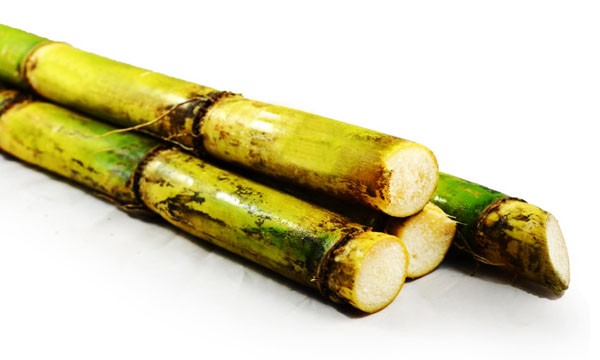Comprehending Cane Sugar Processing: A Comprehensive Overview of the Stages
Comprehending Cane Sugar Processing: A Comprehensive Overview of the Stages
Blog Article
A Thorough Guide to the Ecological Effect and Sustainability Practices in Walking Cane Sugar Processing
The environmental impact of walking stick sugar handling presents an intricate array of obstacles that warrant mindful assessment. From dirt degradation and excessive water usage to the carbon footprint associated with cultivation and production, the repercussions of conventional techniques are far-ranging. What particular techniques can be carried out to strike a balance in between productivity and environmental stewardship?
Introduction of Cane Sugar Handling
Walking cane sugar handling involves a collection of methodical actions that change sugarcane into polished sugar. Initially, gathered sugarcane is carried to refining facilities, where it undergoes cleaning to eliminate dirt and particles. Following this, the walking stick is squashed to draw out juice, which is after that cleared up by getting rid of contaminations through heating and the enhancement of lime.
The clarified juice undergoes evaporation, where water is removed to focus the sugar web content. This concentrated syrup is then crystallized with cooling, permitting sugar crystals to create. These crystals are divided from the staying syrup utilizing centrifugation, resulting in raw sugar. To accomplish refined sugar, the raw product goes through additional purification processes, which might consist of cleaning and filtering to eliminate continuing to be impurities and color.
The final product is after that dried and packaged for circulation. Throughout this entire process, keeping effectiveness and top quality control is necessary to make sure the sugar fulfills industry criteria. Each action in walking cane sugar processing not only adds to the end product yet likewise has implications for resource use and waste generation, setting the phase for conversations on sustainability and environmental influences connected with sugar production.
Ecological Difficulties of Production
The production of walking cane sugar presents several substantial ecological obstacles that warrant attention. One primary issue is the extensive use agrochemicals, including pesticides and plant foods, which can result in soil deterioration, biodiversity loss, and contamination of local water sources. The overflow from sugarcane areas typically lugs these chemicals into close-by environments, interfering with water life and affecting the health and wellness of areas reliant on these water bodies.
One more obstacle is the high energy consumption connected with sugarcane handling. The boiling and refining stages need significant heat, largely created by melting fossil gas, adding to greenhouse gas discharges. Furthermore, the expansive acreage needed for sugarcane cultivation can cause logging and habitat damage, further worsening climate adjustment and harmful wild animals.
In addition, the labor methods in some areas increase moral worries, as employees may encounter inadequate working problems and insufficient wages. This situation frequently continues a cycle of destitution in local communities. Cane Sugar Processing. Resolving these environmental difficulties is vital for creating a lot more sustainable techniques in walking cane sugar manufacturing, eventually profiting both the environment and the communities associated with this industry
Water and Land Use Influence
Water sources and land usage are essential components in the walking stick sugar industry that significantly impact the environment. The cultivation of sugarcane requires substantial water input, with quotes suggesting that it can consume approximately 2,000 liters of water per kg of sugar generated. This intensive use of water frequently results in exhaustion of neighborhood water sources, affecting not just the sugarcane plantations yet likewise surrounding environments and neighborhoods that rely upon the very same water resources for farming and residential use.

Furthermore, land usage for sugarcane farming can bring about deforestation and the conversion of natural habitats right into monoculture haciendas. This technique diminishes biodiversity, interferes with neighborhood communities, and adds to soil degradation. The development of sugarcane areas commonly trespasses on beneficial farming land, creating competitors for resources between food and biofuel production.
Lasting methods, such as optimizing irrigation techniques and carrying out crop rotation, are important to minimize these impacts. By embracing extra efficient water use and land management methods, the cane sugar sector can decrease its environmental impact, making certain a balance in between agricultural efficiency and ecological conservation.
Greenhouse Gas Emissions
Greenhouse gas emissions represent a significant environmental concern within the cane sugar handling industry, specifically as farming methods increase to fulfill global need. The farming of sugarcane, a crop that prospers in tropical climates, depends heavily on synthetic plant foods and chemicals, which add to nitrous oxide exhausts. In addition, land-use modifications, consisting of logging for new sugarcane vineyards, release carbon dioxide stored in plants and soil.
During processing, energy intake is another major resource of greenhouse gas emissions - Cane Sugar Processing. Several sugar mills make use of fossil gas to power equipment and generate warmth, causing substantial carbon impacts. Additionally, the transportation of raw sugarcane and completed items includes layers of exhausts via gas combustion in lorries
The advancing result of these emissions aggravates environment modification, posturing risks not just to the atmosphere however read more also to the long-term feasibility of the market. Stakeholders must identify the urgent demand for detailed techniques that deal with these discharges. This involves evaluating existing agricultural techniques, refining methods, and transport systems to determine locations for renovation and mitigation. Dealing with greenhouse gas exhausts is crucial for cultivating an extra sustainable walking stick sugar industry in a transforming environment.

Lasting Practices and Innovations
Sustainable methods and technologies are increasingly crucial in the cane sugar handling market as stakeholders you can try this out seek to minimize ecological influences while keeping performance. One considerable improvement is the implementation of integrated crop monitoring, which maximizes resource usage by combining dirt administration, bug control, and crop turning methods. This method improves yield while decreasing chemical inputs and maintaining soil wellness.
In addition, the fostering of sustainable power sources, such as biomass from sugarcane deposits, has obtained traction - Cane Sugar Processing. By transforming waste products right into power, processing centers can lower their dependence on fossil gas, consequently lowering greenhouse gas exhausts
Water administration practices have actually additionally seen enhancements through the recycling and reusing of water in handling plants, dramatically decreasing freshwater usage. Technologies in modern technology, such as accuracy farming, allow farmers to monitor crop health and wellness and resource use more efficiently, ensuring lasting cultivation practices.
In addition, qualification programs like Fair Trade and Jungle Alliance urge ecologically liable farming methods and advertise social equity within the supply chain. By welcoming these sustainable methods and advancements, the walking stick sugar processing market can improve its resilience and contribute favorably to ecological stewardship.
Verdict
The ecological effect of walking stick sugar processing provides considerable difficulties, including dirt deterioration, high water usage, and greenhouse gas exhausts, together with moral issues connected to labor techniques. Addressing these concerns via lasting practices, such as incorporated plant management, renewable resource fostering, and water recycling, is important. By advertising visit site socially equitable and eco liable methods in sugar production, the sector can alleviate its negative results, ensuring a much more sustainable future for both environments and communities associated with this field.
Cane sugar handling involves a collection of organized steps that transform sugarcane into polished sugar. Each step in walking stick sugar handling not just adds to the last item yet also has ramifications for source use and waste generation, setting the stage for conversations on sustainability and environmental impacts connected with sugar production.
Greenhouse gas exhausts stand for a considerable environmental worry within the walking cane sugar handling industry, specifically as farming methods broaden to meet worldwide need.Sustainable practices and developments are progressively important in the cane sugar processing market as stakeholders seek to minimize ecological effects while maintaining performance.The ecological influence of cane sugar processing provides considerable obstacles, consisting of dirt destruction, high water intake, and greenhouse gas discharges, along with ethical problems associated to labor practices.
Report this page